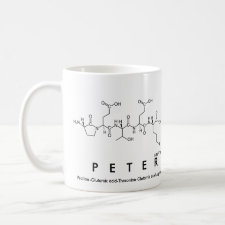
Authors: Cummins W, Duggan P, McLoughlin P
Article Title: A comparative study of the potential of acrylic and sol-gel polymers for molecular imprinting.
Publication date: 2005
Journal: Analytica Chimica Acta
Volume: 542
Issue: (1)
Page numbers: 52-60.
DOI: 10.1016/j.aca.2005.01.042
Alternative URL: http://www.sciencedirect.com/science/article/B6TF4-4FH4V4X-2/2/5f4715af3c0594f740ab6c2766db34f0
Abstract: The successful molecular imprinting of 2-aminopyridine (2-apy) in bulk polymerisations of acrylic and sol-gel based polymers has been achieved. Both polymeric systems reveal varying degrees of affinity in rebinding the original template as well as a number of structural analogues. Rebinding was conducted in chloroform, acetonitrile and methanol in order to assess the role of hydrogen bonding in imprinting. The acrylic imprinted polymer retained approximately 50% of the template in rebinding studies in chloroform compared to 100% for the sol-gel. However, this higher affinity for the sol-gel was accompanied by a higher degree of non-specific binding. While the acrylic polymer performed poorly in acetonitrile, the sol-gel maintained a high degree of discrimination.The acrylic polymer exhibited little discrimination between imprinted and reference polymers for 3-aminopyridine (3-apy) indicating the high selectivity of the MIP polymer for 2-apy relative to 3-apy. This selectivity was reduced in acetonitrile. Selectivity of the sol-gel for 2-apy in chloroform was poor as 3-apy was retained to a similar degree. Comparable results were obtained in acetonitrile. 4-Aminopyridine (4-apy) bound strongly to all polymers in all solvents and proved very difficult to remove due to the high degree of non-specific binding for both polymeric matrices
Template and target information: 2-aminopyridine, 2-apy
Author keywords: molecular imprinting, molecular recognition, 2-aminopyridine, sol-gel, acrylic



Join the Society for Molecular Imprinting

New items RSS feed
Sign-up for e-mail updates:
Choose between receiving an occasional newsletter or more frequent e-mail alerts.
Click here to go to the sign-up page.
Is your name elemental or peptidic? Enter your name and find out by clicking either of the buttons below!
Other products you may like:
 MIPdatabase
MIPdatabase









